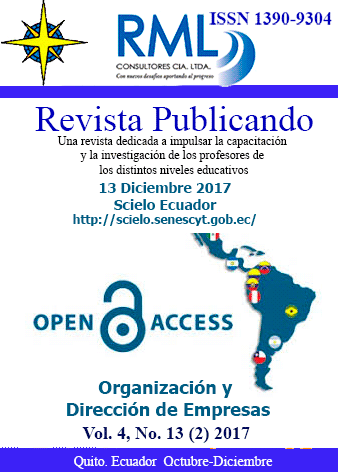Resumen
The achievements of archaeological research in the Republic of Tatarstan of the Russian Federation and in the adjacent territories allow us to reach a new level of generalization and coverage of the medieval urbanization in the Volga-Kama region of Eastern Europe. The purpose of the article is to cover the role of the early feudal state of Volgian (Volga-Kama) Bulgaria at 10 - the first third of 13 centuries. There are limited information from written sources to understand the process of urbanization closely related to the formation of the state of Volga Bulgaria. The basic source for the reconstruction of historical events is the materials of archaeological research. The main results of the study are to determine the development vectors of the Bulgarian urban structures in the general historical context. The influence of the urbanization of the Volga Bulgaria on the historical destinies of the Turkic-speaking, Finno-Ugric and Slavic peoples of Eastern Europe is reflected. This is due, among other things, to the fact that the Volga Bulgaria in the 10th century became the northernmost Muslim region on the periphery of the Islamic world. A comparative analysis was carried out with the processes of urbanization taking place in Russia in the same chronological period. The materials of the article can be useful for specialists dealing with medieval history and archeology of Eastern Europe, as well as in the reconstruction of ethno-cultural processes that led to the formation of state entities.
Referencias
Avdusin D. A., 1980. "The Origin of Old Russian Cities (Based on Archaeological Data)", Questions of History, No. 2, P. 24-42.
Belorybkin G. N.,1995. Settlements of the X-XIII centuries in Upper Posurye and Primokshanye (materials for a rheological map), Pages of the Volgo-Don history. Penza, Pp. 1-61.
Davletshin G. M., 1990. Volga Bulgaria: spiritual culture. The pre-Mongol period. X - the beginning of XIII centuries., Kazan: Tatknigoizdat, 191 p.
Fakhrutdinov R. G.,1975. Archaeological monuments of the Volga-Kama Bulgaria and its territory, Kazan: Tatkhnigoizdat, 219 pp..
Gubaidullin A. M., 2002. Fortification of settlements of Volga Bulgaria, Kazan: Institute of History, the Academy of Sciences of the Republic of Tatarstan, 232 pp.
Khuzin F.Sh., Valiulina S.I., Shakirov Z.G.,2017. “50th Anniversary of Bilyar Archaeological Expedition: results and issues of Great Town investigation”", Povolzhskaya Archeology, No. 2 (20), pp. 8-27.
Khuzin F. Sh., Shakirov Z.G., 2016. A Muslim city in the Middle Volga: pre-Mongol Bilyar, Materials of the Congress of Islamic Archeology of Russia and CIS countries, Kazan: Institute of Archeology, the Academy of Sciences of the Republic of Tatarstan, Pp. 275-287.
Kuza A. V., 1996. Old Russian fortifications of X-XIII centuries. Archaeological Monuments Collection, Moscow, 255 pp.
Khuzin F. Sh., 2001. A Bulgarian city in the X - early XIII centuries, Kazan: Master Line, 480 pp.
Khuzin F. Sh., 1997. Volga Bulgaria in the pre-Mongol period (X - the beginning of the XIII centuries), Kazan: Fest. 184 p.
Kovalevsky A. P., 1956. Akhmed Ibn Fadlan's book about his journey to the Volga in 921-922, Kharkov: Kharkov University Press, 348 pp.
Rudenko K. A.,2007. the Volga Bulgaria in the 11th - early 13th century: settlements and material culture, Kazan: Shkola, 244 pp.
Rybakov B.A. (ed. ), 1985. Archeology of the USSR. Ancient Rus: City, Castle, Village, Moscow: Science, 431 p.
Shakirov Z.G.,2014. "Bilyar Medieval District: Towards a Methodology for Studying the Settlement Structure and the Resource Potential", Povolzhskaya Archeology, No. 2 (8), pp. 37-48.
Shakirov Z., 2016. “Anthropogenic impacts on the forest resources of the Volga and Kama rivers region in the Middle Ages (historical and archaeological aspects)”, SMIA 2016: Benchmarking Interdisciplinary in Archaeological Research – Book of abstracts, XII Nordic Conference on the Application of Scientific Methods in Archaeology, Moesgí¥rd Museum, Aarhus, Denmark, pp. 28-29.
Stern S.M.,1970. The constitution of the Islamic city, Тhe Islamic city. Ed. by A.H. Hourani and S.M. Stern, Oxford, pp. 25–50.
Semykin Yu. A., 2015. "Ferrous Metallurgy and Forging of the Volga Bulgaria in the VIII - the beginning of the XIII Centuries", Archeology of the Eurasian Steppes, Issue 21, Kazan: IA, RT, 228 pp.
Sedov V. V. (ed. ), 1989. The Emergence of an European Medieval City, Moscow: Nauka, 288 pp.
Sitdikov A. G. and Khuzin F. Sh. (ed. ), 2007. Archeology monuments collection of the Republic of Tatarstan, Vol. 3, Kazan, 528 pp.
Storey G.R. (ed.),2016. Urbanism in the Preindustrial World: Cross-Cultural Approaches. Tuscaloosa: University of Alabama Press, 443 p.
Tolochko P. P., 1989. Ancient Russian feudal city, Kiev: Naukova Dumka, 256 p.
Valeev R. M., 2007. Trade and trade routes of the Middle Volga and the Urals in the Middle Ages (9th - early 15th centuries), Kazan: KSU Publishing House, 392 pp.
Valiulina S. I.,2005. Glass of the Volga Bulgaria (Based on the materials of the Bilyar Settlement), Kazan: Publishing Center of Kazan University, 279 pp.
Usted es libre de:
Compartir — copiar y redistribuir el material en cualquier medio o formato
Adaptar — remezclar, transformar y construir a partir del material
La licenciante no puede revocar estas libertades en tanto usted siga los términos de la licencia
Bajo los siguientes términos:
Atribución — Usted debe dar crédito de manera adecuada, brindar un enlace a la licencia, e indicar si se han realizado cambios. Puede hacerlo en cualquier forma razonable, pero no de forma tal que sugiera que usted o su uso tienen el apoyo de la licenciante.
NoComercial — Usted no puede hacer uso del material con propósitos comerciales.
CompartirIgual — Si remezcla, transforma o crea a partir del material, debe distribuir su contribución bajo la lamisma licencia del original.
